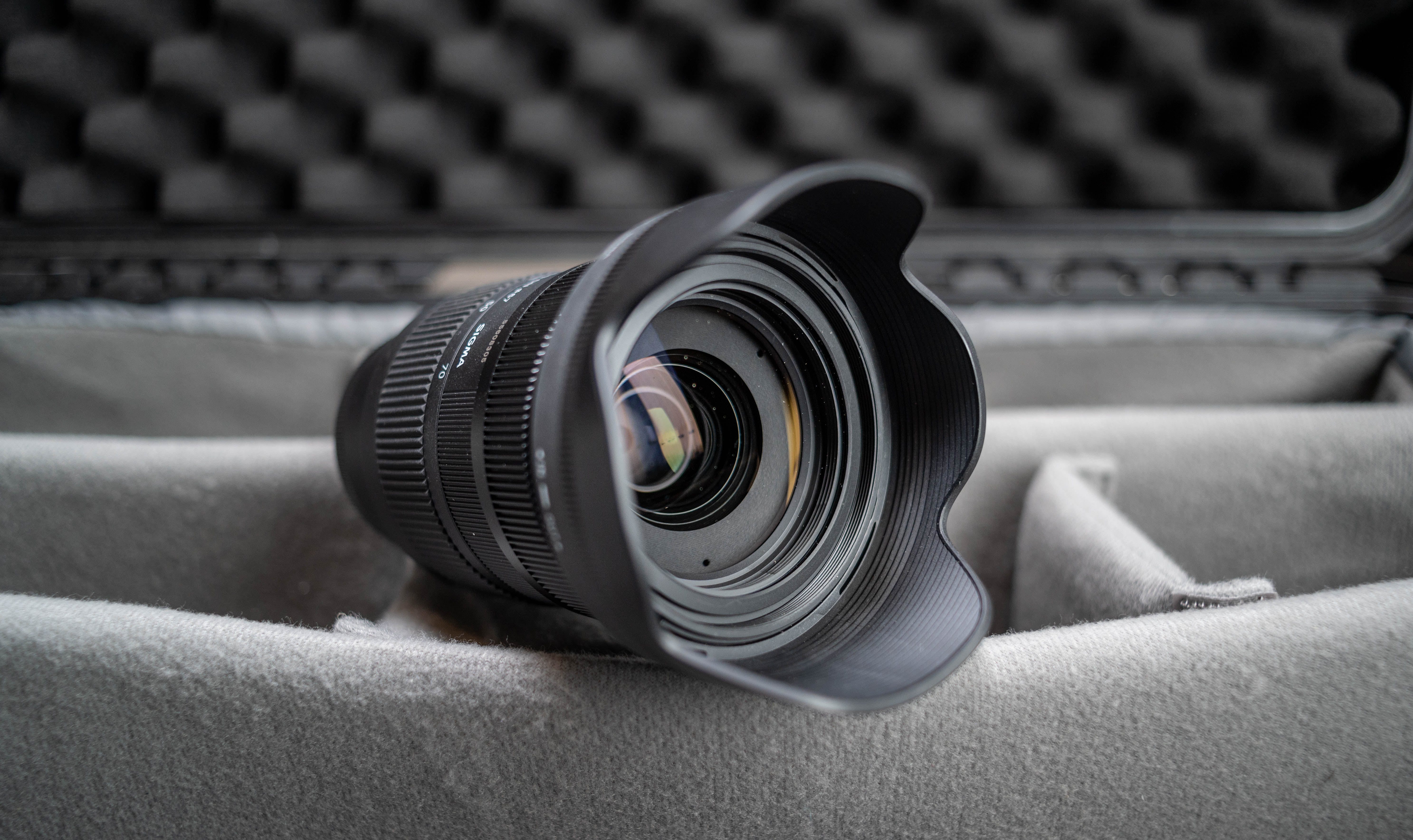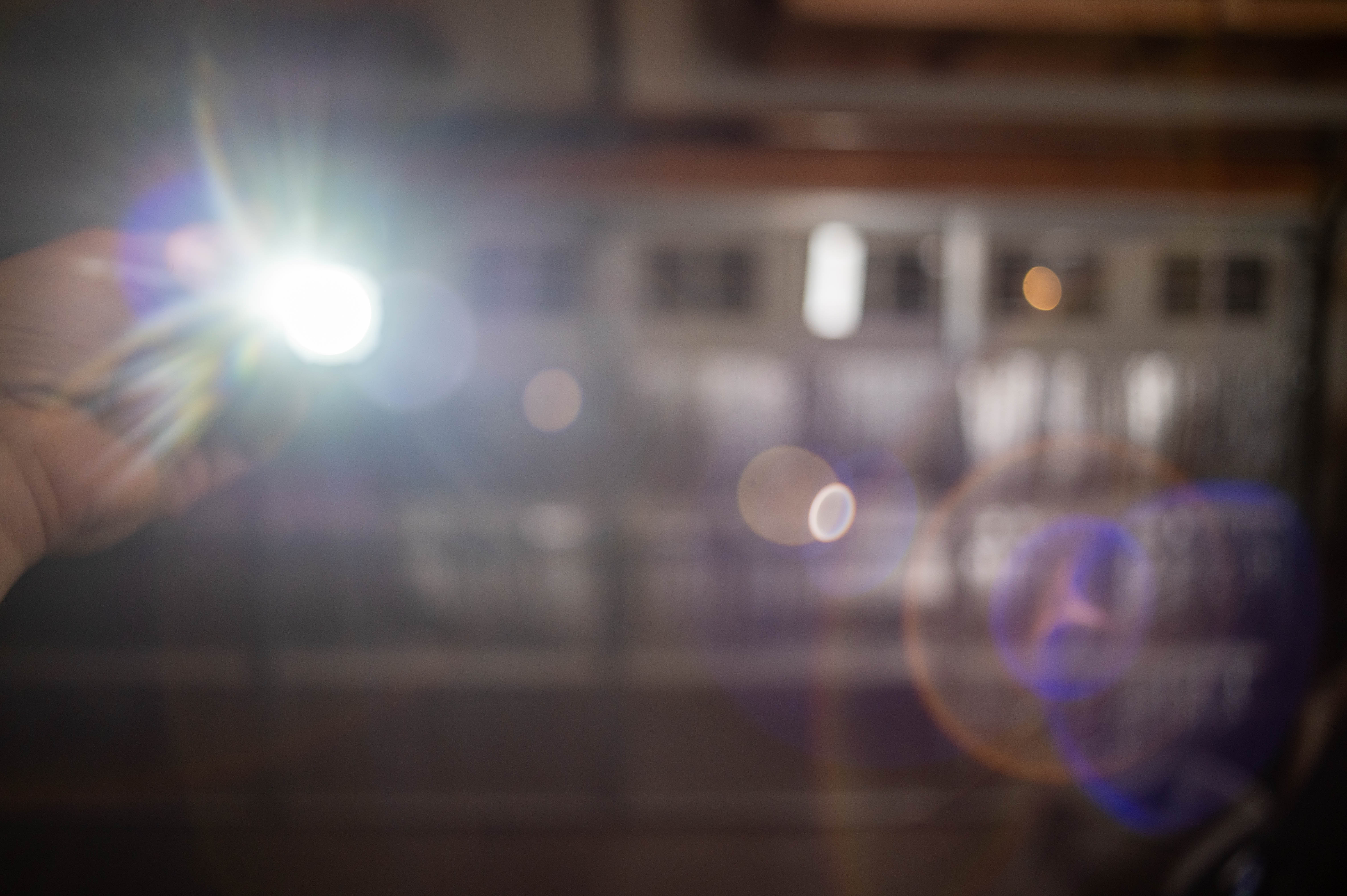Sigma allowed me to take the new Sigma 28-70mm F2.8 DG DN | C for a bit of a spin. I had just enough time to review the surprisingly small zoom lens on a Sony FX9. I found the lens to be of great quality and loved the small portable size and weight. 
The optical design of the Sigma 28-70mm F2.8 DG DN | Contemporary is similar to the 24-70mm F2.8 DG DN | Art, which is well-known for its optical performance throughout its zoom range the Art lenses by Sigma.
The 28-70mm F2.8 DG DN | Contemporary optical design includes three aspherical, two FLD, and two SLD elements. Despite using fewer elements in total than the 24-70mm F2.8 DG DN | Art, the design thoroughly corrects axial chromatic aberration and sagittal coma aberration, which cannot be corrected in-camera. Thus, giving shooters uniformly sharp images from the center to the edges of the frame.
Flare and Ghosting are well controlled because of the use of Super Multi-Layer Coating and NanoPorous Coating. I really mean to say this: the lens will give you an interesting flare if you smack the front element with a bright LED flashlight, but the daylight ghosting because of an overhead sun is more controlled. Shoot outside with only a lens hood, and your shadows and blacks will retain their color and exposure levels. As a bonus, the Sigma 28-70mm F2.8 DG DN | C also features a water and oil repellant coating on the front side of the lens.

While my review focused on the FX9 and Sigma 28-70mm F2.8 DG DN | C, that camera seemed gigantic compared to the much smaller sized Sigma zoom lens. To be absolutely honest, the Sigma 28-70mm F2.8 DG DN | C might be a better fit on a smaller camera like the Sony FX6 or FX3 or the Sigma FP L. You see, the Sigma 28-70mm zoom lens is not very big with its measurements of 2.8 – 4.0 inches. In fact, the 2.8 – 4.0 inch 28-70mm zoom lens compared to the Sony G Master 24-70 measuring 3.45 x 5.35 inches is shorter and only weighs 16.6oz compared to the G Master’s 1.95 lb. Shorter and lighter, you get how the Sigma might have some size and weight advantages.
When you are shooting handheld all day or need to travel with all your gear on a flight or a case, size and weight can make a difference. When it comes to my wife, who is also a photographer, the size and weight of a camera and lens combination are of the utmost importance. I think it is no surprise to see Sigma highlight a video like the one below. Know your market and build lenses for them, right?
You see, Sigma developed the 28-70mm F2.8 DG DN | Contemporary with portability in mind. But is it durable? Lens manufacturers often want to make a lighter, more portable lens, and the end result is a plastic mess incapable of constant use year and year. In the case of the Sigma 28-70mm F2.8 DG DN | Contemporary, the lens feels solid if a little plastic. Here is what Sigma says about the 28-70mm; “that it uses a type of polycarbonate called TSC (Thermally Stable Composite), which has a comparable level of thermal shrinkage to aluminum. This helps reduce differences between the thermal shrinkage of the metal and non-metal parts, ensuring stable levels of performance even in an environment with extreme temperature changes.”
While the lens felt a bit like plastic, I found very little play within any lens body parts, and the mount to the camera felt tight and stable with no wiggle. I feel confident the 28-70mm F2.8 DG DN | C may last a professional shooter nearly as long as a Sigma Art Series lens.
The Focus and Zoom. I’ll focus on the focus; first, Dad pun intended. The Sigma 28-70mm F2.8 DG DN | C has just one light-weight focusing element, which keeps the AF unit small. This, along with a quiet and fast stepping motor, makes for responsive and near-silent autofocus performance. When shooting still photography, this kind of smaller AF unit works well enough for most everyone. The fast-stepping motor is not quite as smooth as the Art Series 24-70, but the difference is minimal. I’d feel confident shooting a video with this lens without hesitation. Maybe in high frame rate situations where you turned on a camera’s AF speed to be as quick as possible, you might see the difference a bit more. Manually pulling focus felt intuitive and natural. So even though the smaller Sigma 28-70mm F2.8 DG DN | C also has a shorter focus, the changes from foreground to background felt appropriate and without fly-by-wire strangeness sometimes found on other lenses.
The Zoom is the type where the front element, and thus the whole lens, expands outward. Many lenses do such a thing, and usually, this is not a problem. The zoom is not as smooth as the focus, and part of the reason is the expanding outward of the front element. The other thing to know about the zoom ring is this; your focus ring will forward or back with the focal length. If you have a follow focus unit attached, then changing the focal length will also mean changing the placement of the follow focus. Is this a big deal? These days I tend to shoot video with autofocus turned on. The capabilities of modern mirrorless cameras mean it makes sense to use the autofocus features if they work for you.
The 28-70mm F2.8 DG DN | C is a small and mighty lens purpose-built with smaller mirrorless cameras like the Sigma FP L or the Sony FX3. The small lens and small mirrorless camera combination might be the ideal travel camera combination. Small and light-weight usually mean bringing a camera to remote locations and grabbing all the shots you want. Do not worry about the Contemporary brand versus the Art Series. Both of these lenses are strong image-makers and feel confident using either.
Sigma 28-70mm F2.8 DG DN | Contemporary Features:
- Superb build quality
- Focus mode switch
- Nano Porous Coating
- Light-weight and compact body
- Dust and splash-proof structure (applied to the mount only)
- Uncompromised optical performance
- Water and oil-repellent coating (front element)
- High-precision, durable brass bayonet mount
- Designed to minimize flare and ghosting
- “Made in Japan” craftsmanship

